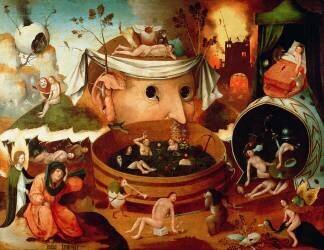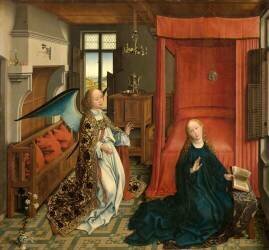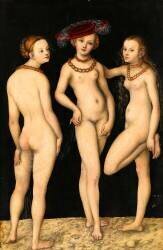Flemish and Nordic Renaissance paintings
The regions of Holland, Belgium and Burgundy (forming Flanders) were ruled at this time by the Burgundian dukes Philip the Good (1396-1467) and Charles V (1500-1558).
The Reformation initiated in Germany in 1517 by Martin Luther had a considerable influence on artistic creation, encouraging artists to depict the religious more soberly and realistically.
It condemned the representation of saints and Mary, but recognised that art had an educational role to play in society. Altarpieces began to appear (e.g. Barthélémy d'Eyck's tryptique), which used perspective to divide the sacred and human figures, so that they could coexist in the same painting but not on the same plane (e.g. Jan Van Eyck's Mystic Lamb altarpiece).
Around 1410-1420, Flemish artists discovered a new technique: oil painting. It had the advantage of drying more slowly than Italian tempera, allowing the artist to modify layers of paint that were still fresh and to paint more easily. The use of glacis (= varnish) makes the canvas shiny and luminous, and contributes to the aesthetics of the painting and the verisimilitude of the scene depicted, as is the case with Van Eyck and his Vierge du Chancelier Rolin.
From an economic point of view, cities such as Ghent, Antwerp and Bruges developed during the 15th century and quickly became centres of artistic creation.
Trade with the rest of the world contributed to the emergence of a bourgeois society that commissioned many works from artists.
To meet the demands of this new social class, painters developed a new genre of secular (i.e. non-religious) painting, commonly known as genre scenes, such as The Arnolfini Husband and Wife by Jan Van Eyck or The Lender and his Wife by Quentin Metsys, true representations of the daily life and mores of the time.










































